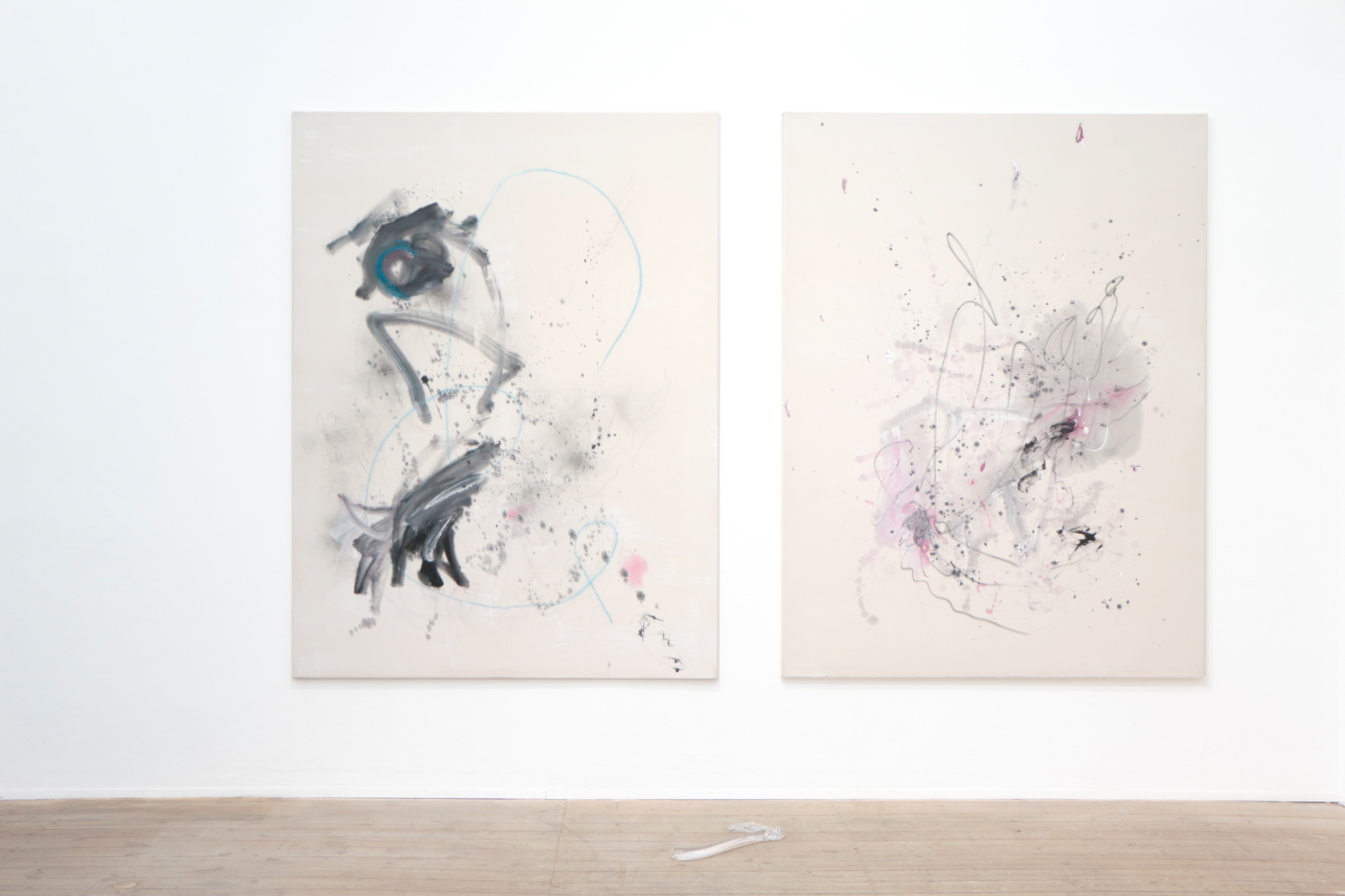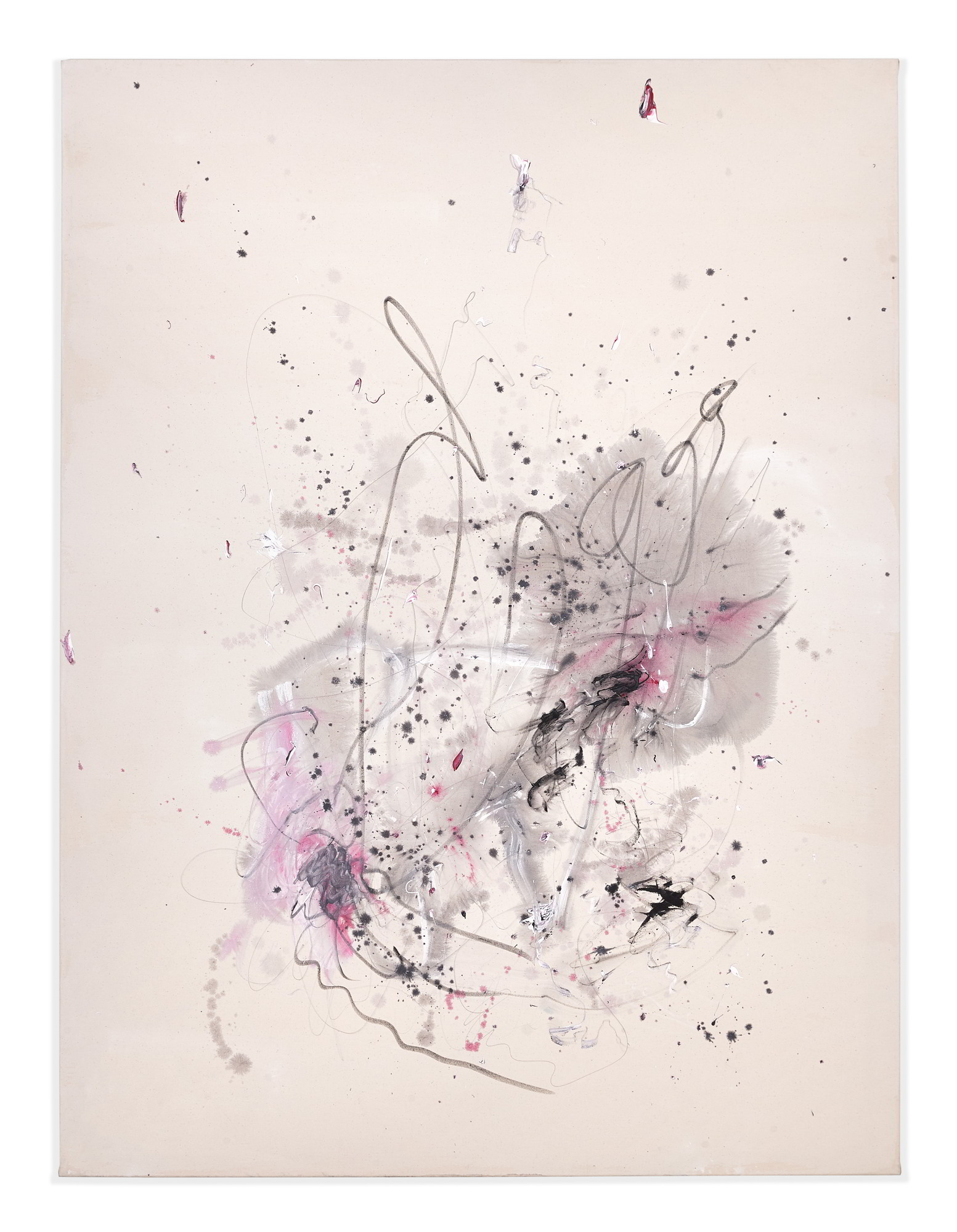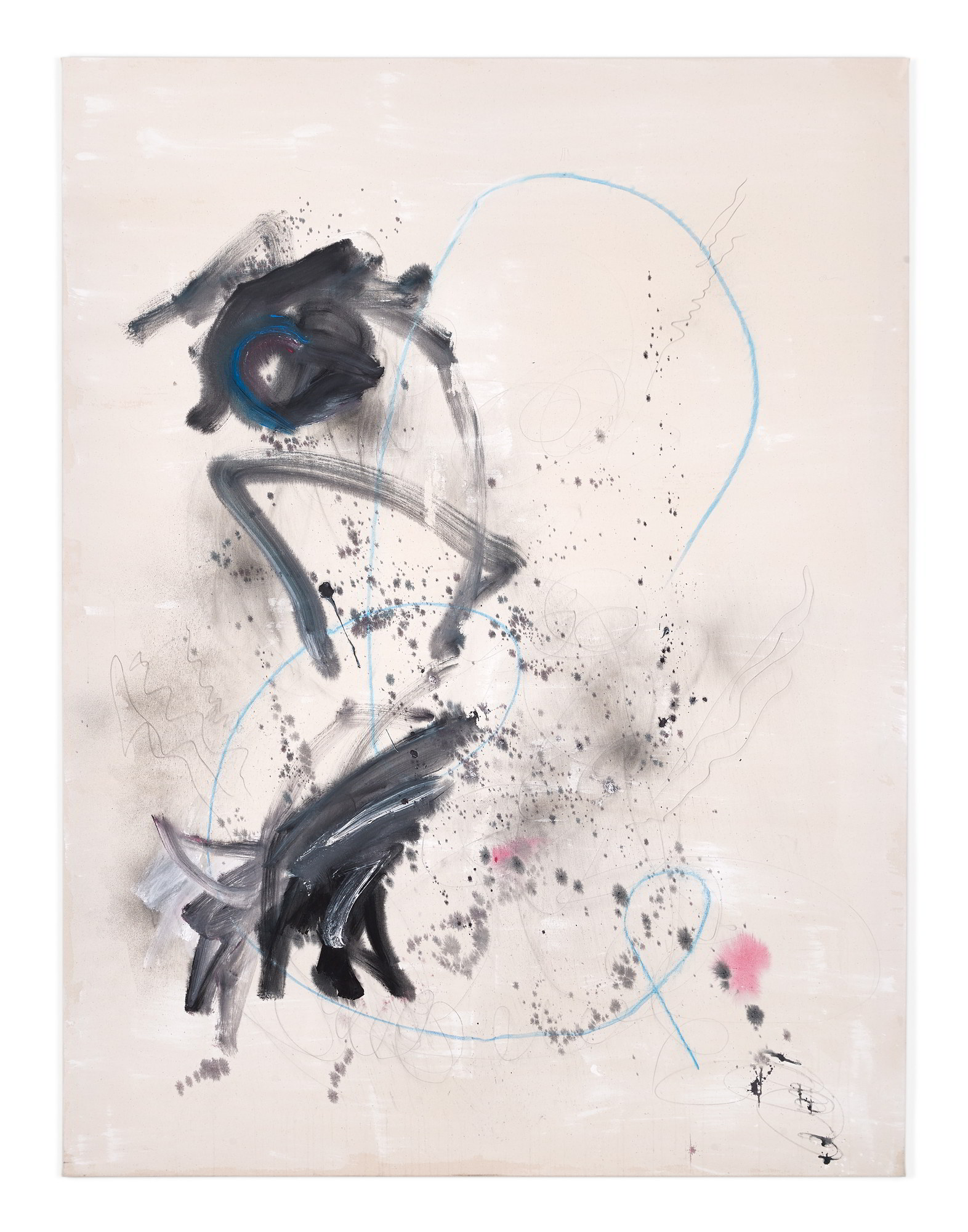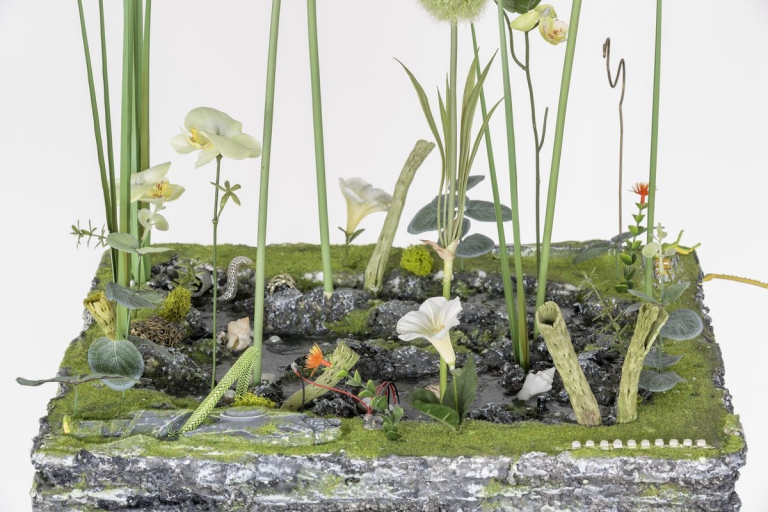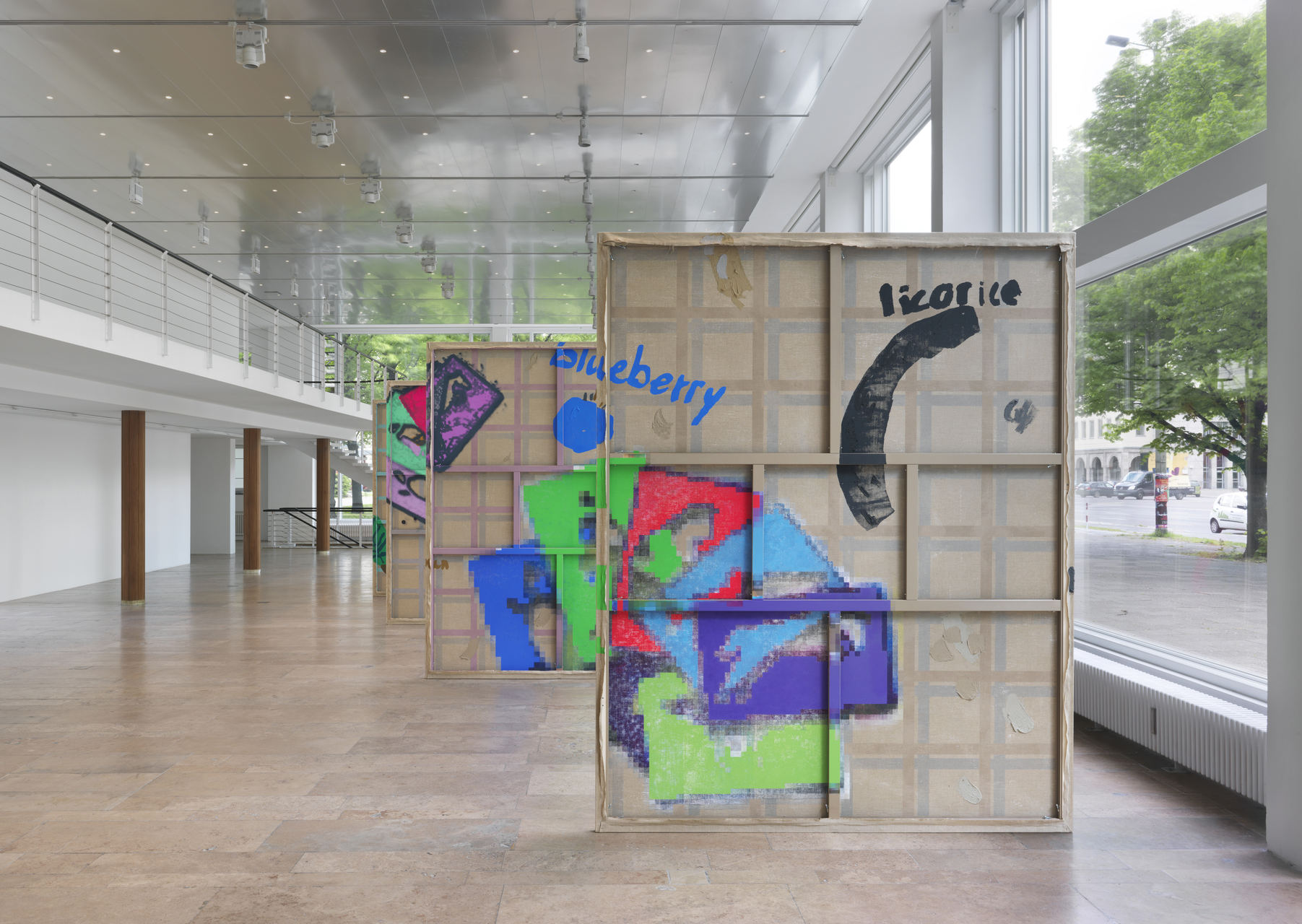Artist: Cordula Ditz
Exhibition title: How To Disappear
Venue: Galerie Conradi, Hamburg, Germany
Date: April 13 – May 19, 2018
Photography: all images copyright and courtesy of the artist and Galerie Conradi, Hamburg/Brussels
Two details in the artist Cordula Ditz’s highly condensed printed wall pieces gesture back toward sixteenth-century Great Britain, where a metal device was invented that, for three centuries, would serve to strip women and, later, slaves of their freedom, self-determination, and integrity. The ‘scold’s bridle,’ a kind of iron muzzle made of several braces and a mouthpiece, was used to punish, humiliate, and simply silence ‘problematic’ women. In Ditz’s works, aspects of oppression, impuissance, and loss of control in various forms associated with the stereotype of the helpless woman appear side by side with historic examples of resistance. Depictions of ghostly apparitions point to Spiritualism as practiced in nineteenth-century America, where being cast in the role of the medium capable of communication with spirits helped women raise their voices and publicly address issues of contemporary social and political relevance for the first time.
The two hatchets resting on the gallery’s dark wood floor like props, lending the exhibition space a stage-like aura, are made of glass; their fragility contrasts with their versatile symbolism of force— they, too, may be taken as emblems of the American women’s movement. Signifying violence, they recur in one illustration in the large-format pictures. It shows a woman attacking a painting with a hatchet: the suffragette Mary Richardson, who had served six months in prison, is laying into Velázquez’s Venus at the National Gallery on March 10, 1914. She will later justify the act as a protest against the arrest of her fellow campaigner Emmeline Pankhurst.
Crossing media boundaries, Ditz’s practice investigates the ways in which cultural history conditions perspectives on who is entitled to what and patterns perceptions as well as the strategies of self-empowerment the defeated resort to. At first glance, this strategy would seem to collide with the abstract-expressionist style of the four canvases. Combining fierce sweeping gestures with graphical elements and restrained expressiveness, they counteract the material’s subversive determinacy with an airy—though deceptive—lightness. These works are titled Post Automatic Painting and numbered—a contradiction in terms: standardization versus chance. The initial impression of fluent ease gradually resolves into a lived reality increasingly shaped by mechanisms of control that also figures in Ditz’s video pieces. Fainting presents a series of women having fainting fits, accompanied by music from hypnosis videos on YouTube supposedly featuring special frequencies that can dispel inner conflicts and the error known as overthinking.
The looped video consists of footage samples dating from between the dawn of the moving image and today’s digital media imagery. Film comes to play a special role in Ditz’s approach to (pop)cultural history. Alison Landsberg has coined the concept of “prosthetic memory”[1] to describe the way film, as an icon of mass culture, begins to act as a joint between individual and collective consciousness. The dissemination of others’ experiences through film expands consciousness— formerly the yardstick of individuality—into a postmodern storehouse of knowledge, primarily through technical interventions of affect transfer. As early as the eighteenth century, art critics argued that the beholder before a painting needed to forget his or her own standpoint in order to assimilate the affects immanent to the work in a performance of identification with the depiction and its intended meaning.[2] Like the cinema with its darkened auditorium, the plethora of shocking information substantiated by visual material that circulates on the internet presents as a logical extension of that virtual fusion with a collective worldview. Blessing or curse?
Ideally, collective memory as analyzed by Maurice Halbwachs[3] strengthens not only our sense of community but also a democracy animated by empathy, one in which the lives—and, more particularly, ‘the pain’—‘of others’ (Susan Sontag) are on our personal agendas. Can artificial or artistic impulses transmitted by this experiential prosthesis help us overcome ostensible dichotomies between self and other, between genders, between ethnic groups? Meanwhile, any collectivity contains the danger of abuses of power: when ‘truths’ spread by the media and reinforced by their affective impetus become tools of propaganda so that we lose control of our own identities and, more importantly, our moral compass.
Whether through critical meta-media engagement or now more, now less authentic physical performances of impuissance and sudden faintness, any loss of control is felt as an instant of personal integrity forfeited. At the other end of the spectrum, the abstract painter must deliberately cast off the burden of civilization that is composure, breaking all social strictures so that his or her genius can achieve unadulterated self-expression. A disconcerting nexus emerges between bourgeois ideas of creative freedom, the deep cuts hewn into the back of a lacerated Venus, the cool and flawless surface of the glass hatchet, and the exhausted media worker who is constantly on air.
[1] Alison Landsberg, Prosthetic Memory: The Transformation of American Remembrance in the Age of Mass Culture, New York: Columbia University Press, 2004.
[2] See Denis Diderot, in: Michael Fried, Absorption and Theatricality: Painting and Beholder in the Age of Diderot, Chicago: University of Chicago Press, 1988.
[3] See Maurice Halbwachs, On Collective Memory, ed. and trans. Lewis A. Coser, Chicago: University of Chicago Press, 1992
Cordula Ditz, How To Disappear, 2018, exhibition view, Galerie Conradi, Hamburg
Cordula Ditz, How To Disappear, 2018, exhibition view, Galerie Conradi, Hamburg
Cordula Ditz, How To Disappear, 2018, exhibition view, Galerie Conradi, Hamburg
Cordula Ditz, How To Disappear, 2018, exhibition view, Galerie Conradi, Hamburg
Cordula Ditz, How To Disappear, 2018, exhibition view, Galerie Conradi, Hamburg
Cordula Ditz, How To Disappear, 2018, exhibition view, Galerie Conradi, Hamburg
Cordula Ditz, How To Disappear, 2018, exhibition view, Galerie Conradi, Hamburg
Cordula Ditz, How pale the princess is! Never have i seen her so pale, 2018, Acrylic, spray paint and oil stick on printed textile fibre, 200 x 150 cm
Cordula Ditz, I could make it all disappear – Post-automatic painting #13, 2017, Acrylic, spray paint, oil stick and pencil on canvas, 200 x 150 cm
Cordula Ditz, I never say anything at all – Post-automatic painting #3, 2017, Acrylic, spray paint, oil stick and pencil on canvas, 200 x 150 cm
Cordula Ditz, The prolonged slavery, 2018, Acrylic, spray paint and oil stick on printed textile fibre , 200 x 150 cm
Cordula Ditz, The system only dreams in total darkness, 2018, Acrylic, spray paint and oil stick on printed textile fibre, 200 x 150 cm
Cordula Ditz, Untitled, 2017, Handmade glass, 44 x 19 x 4 cm
Cordula Ditz, We don’t care, 2017, Acrylic, spray paint and oil stick on printed textile fibre, 200 x 150 cm
Cordula Ditz, We favor the simple expression of the complex thought, 2018, Acrylic, spray paint, oil stick and pencil on canvas, 200 x 150 cm


